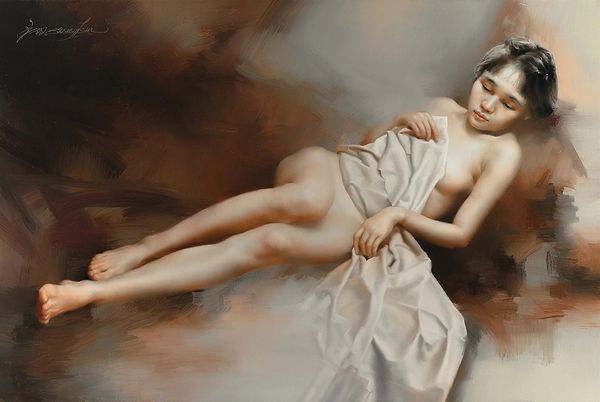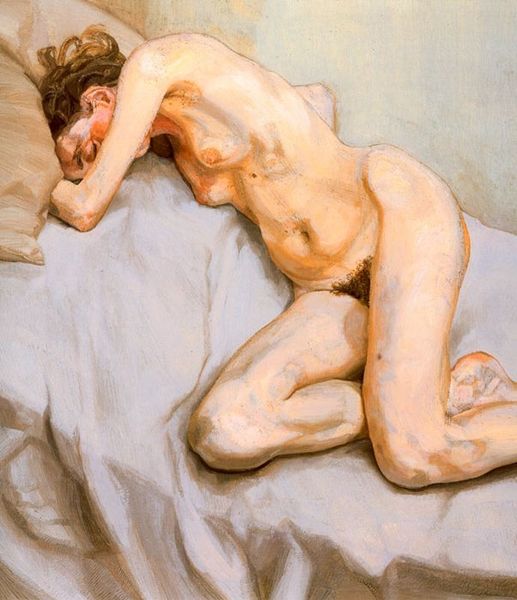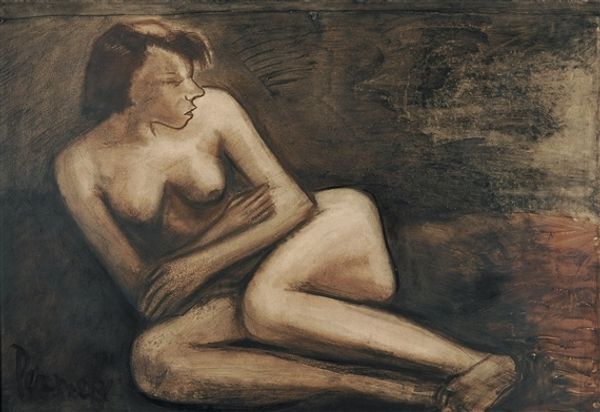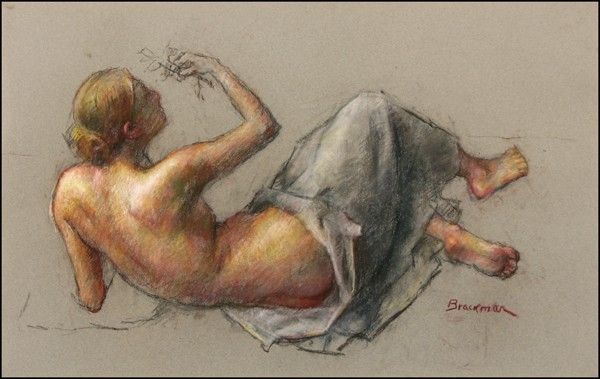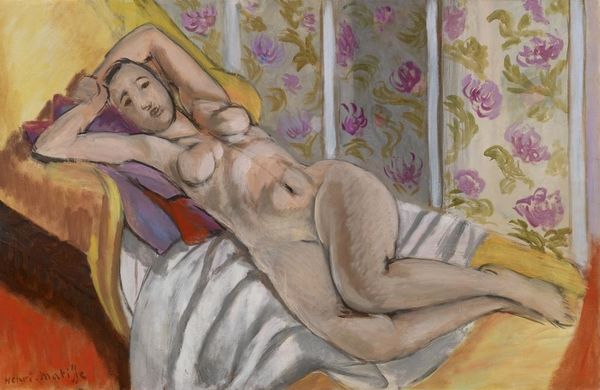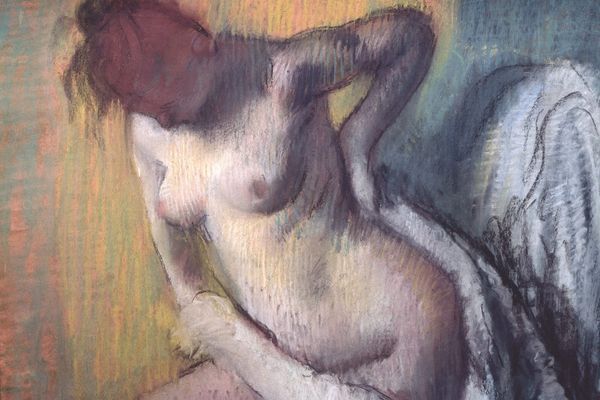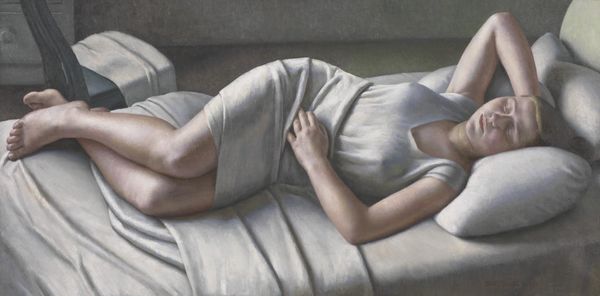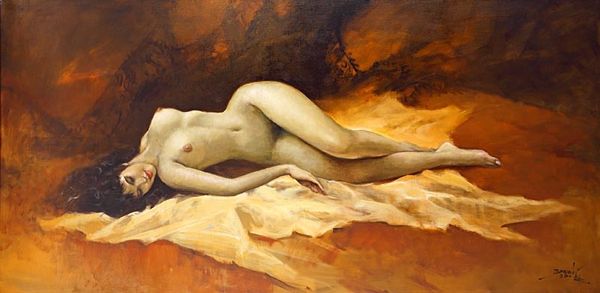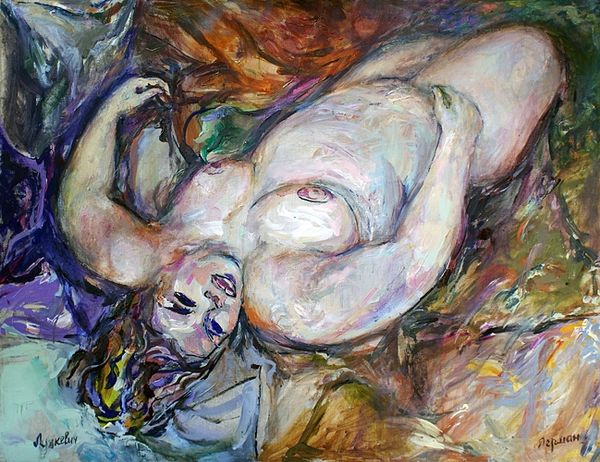
Copyright: Lasar Segall,Fair Use
Editor: Lasar Segall's "Duas Figuras," created in 1933, is captivating. The use of watercolor and oil gives the piece a translucent quality, almost dreamlike, and there is something melancholic about the subdued colors and averted gazes. What do you see in this piece, from a more structural perspective? Curator: Primarily, I am struck by the tension between figuration and abstraction. Observe how the artist delineates the figures using fluid, almost dissolving lines, yet maintains a coherent sense of form. The subtle modeling of the bodies creates a play of light and shadow, contributing to the work’s emotional complexity. Editor: That's fascinating. So the emotion comes from the *way* they are painted, not necessarily from, say, a narrative element? Curator: Precisely. Consider how the artist employs a limited palette of earthy tones. This contributes to the somber mood you observed. However, examine the brushstrokes – their directionality and varying pressure create a surface dynamic that transcends mere representation. It's this surface activity, and how it creates this dynamic tension, that truly conveys emotion. Editor: It's like the brushstrokes themselves are expressive, quite apart from what they depict. Curator: Indeed. Segall orchestrates color, line and texture to express the complex dynamic in the relationship between these figures, moving the art away from conventional portraiture, Editor: That’s a completely fresh way of seeing the painting. Thank you! Curator: My pleasure. I hope that encourages you to think more about how structure shapes meaning!
Comments
No comments
Be the first to comment and join the conversation on the ultimate creative platform.
